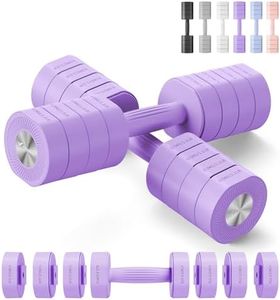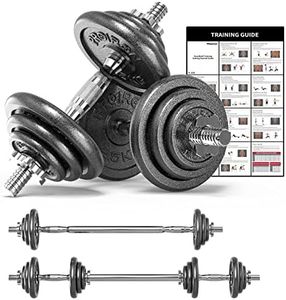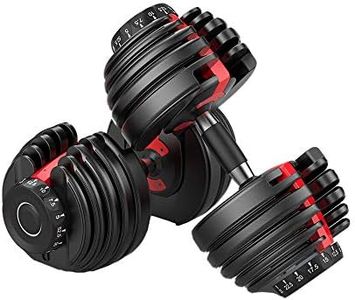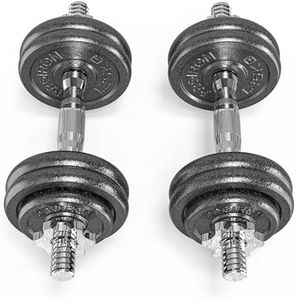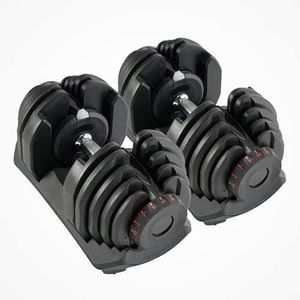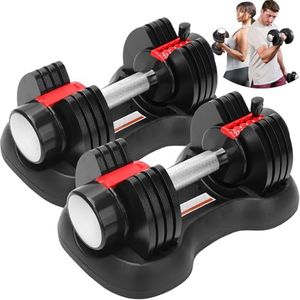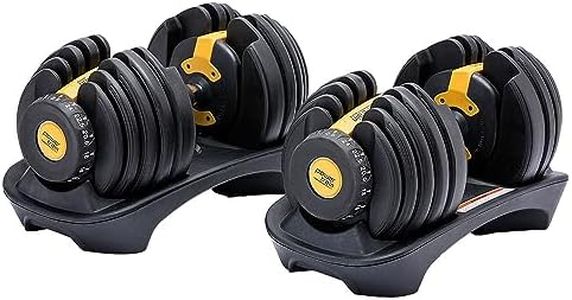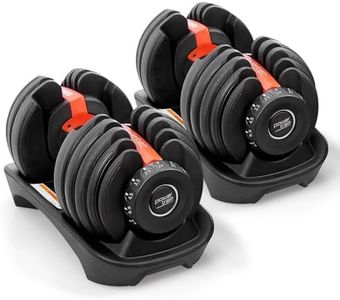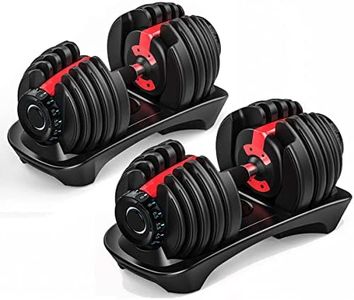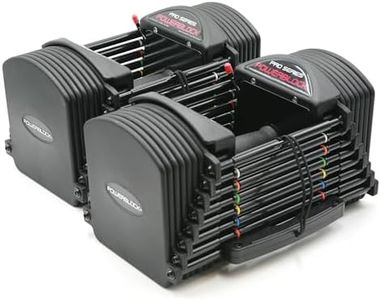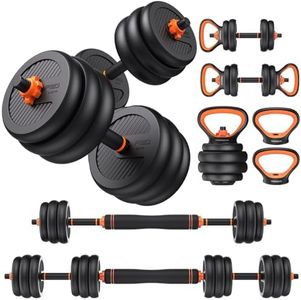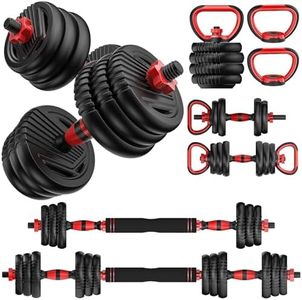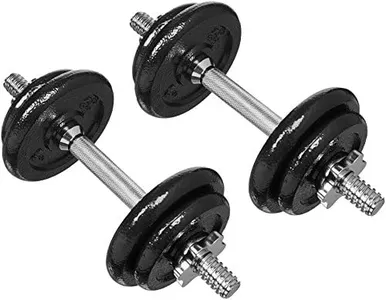We Use CookiesWe use cookies to enhance the security, performance,
functionality and for analytical and promotional activities. By continuing to browse this site you
are agreeing to our privacy policy
10 Best Adjustable Dumbbell Set
From leading brands and best sellers available on the web.Buying Guide for the Best Adjustable Dumbbell Set
Choosing an adjustable dumbbell set can be a smart move if you want a space-saving and versatile solution for strength training at home. Instead of buying multiple pairs of regular dumbbells, an adjustable set allows you to change the weight quickly and easily. When selecting a set, you should focus on how easy the adjustment mechanism is, the overall weight range, how comfortable the handles feel, and the build quality. Your personal fitness level, goals, and available space will help guide you to the best option for your needs.Weight RangeThe weight range tells you both the lightest and heaviest weight you can set with your adjustable dumbbells. This is important because it determines the variety of exercises and progression possible with your set. Models may start as light as 2 to 5 pounds and go up to 50 or even over 100 pounds per dumbbell. For beginners, a lower maximum weight might be enough, while advanced lifters or those who want to grow with their equipment should consider higher ranges. Try to pick a set that covers not just your current strength level but also has some room for progression, depending on your training intentions.
Adjustment MechanismThe adjustment mechanism refers to how you change the weights on each dumbbell. There are different types, such as dial, pin, lever, or plate-loaded systems. This is important because a quick and reliable adjustment makes your workout smoother and safer. Faster mechanisms like dials or levers save time, especially in circuit or interval training, while traditional plate-loaded systems may take longer but are sometimes simpler or more robust. Consider how often you'll need to change weights during your workouts and choose a mechanism you'll find easy and safe to use.
Grip ComfortGrip comfort refers to how the handle feels in your hand, which is vital for both safety and enjoyment. Handles come in different shapes, sizes, and materials—some may be knurled (textured) for grip, while others may have smooth or rubber coatings. The best grip depends on your hand size and whether you prefer a softer or firmer hold. If you plan on longer workouts or have sensitive hands, a more padded grip could be beneficial. Always consider how the handle might feel with sweaty hands or longer sessions.
Durability and MaterialDurability is about how well the dumbbells are built and how long they will last without wear or breakage. Adjustable dumbbells are commonly made of metal, but some include plastic parts, especially around the adjustment mechanisms. Higher durability usually means surviving accidental drops and frequent adjustments. If you plan to use them heavily or want a more 'gym-like' feel, look for models with mostly metal construction and minimal plastic. Consider your usage pattern: if you only train occasionally, ultimate durability may be less critical, but regular heavy use calls for robust materials.
Increment SizeIncrement size is the amount of weight difference between the adjustments you can make. For example, some dumbbells jump in 2.5-pound increments, while others do 5 or 10 pounds. Smaller increments allow for more gradual progression, which is especially helpful for beginners or those focusing on lighter, more controlled exercises. If you're interested in fine-tuning your strength gain or do exercises that require precision, look for dumbbells with smaller increment steps. For general fitness and bigger lifts, larger increments may be acceptable.
Storage and FootprintStorage and footprint refer to how much space the dumbbells and their case, rack, or tray take up in your home. Some adjustable dumbbell sets are compact and include a stand or tray, while others are bulkier or have separate weight plates. If your workout space is limited, look for a compact set with an efficient storage solution. Also, make sure you have enough room to safely load, unload, and use the dumbbells in your training area.
